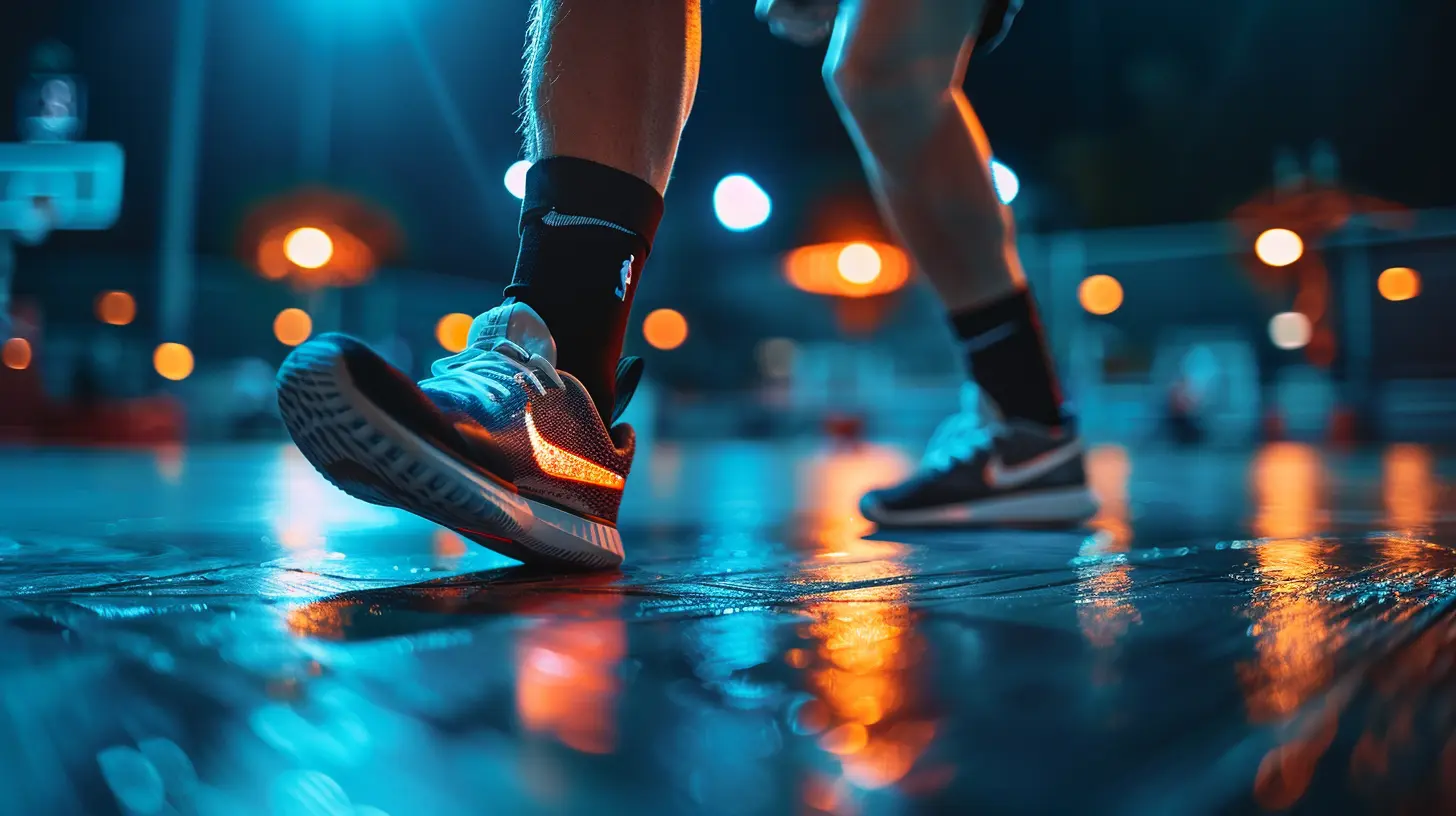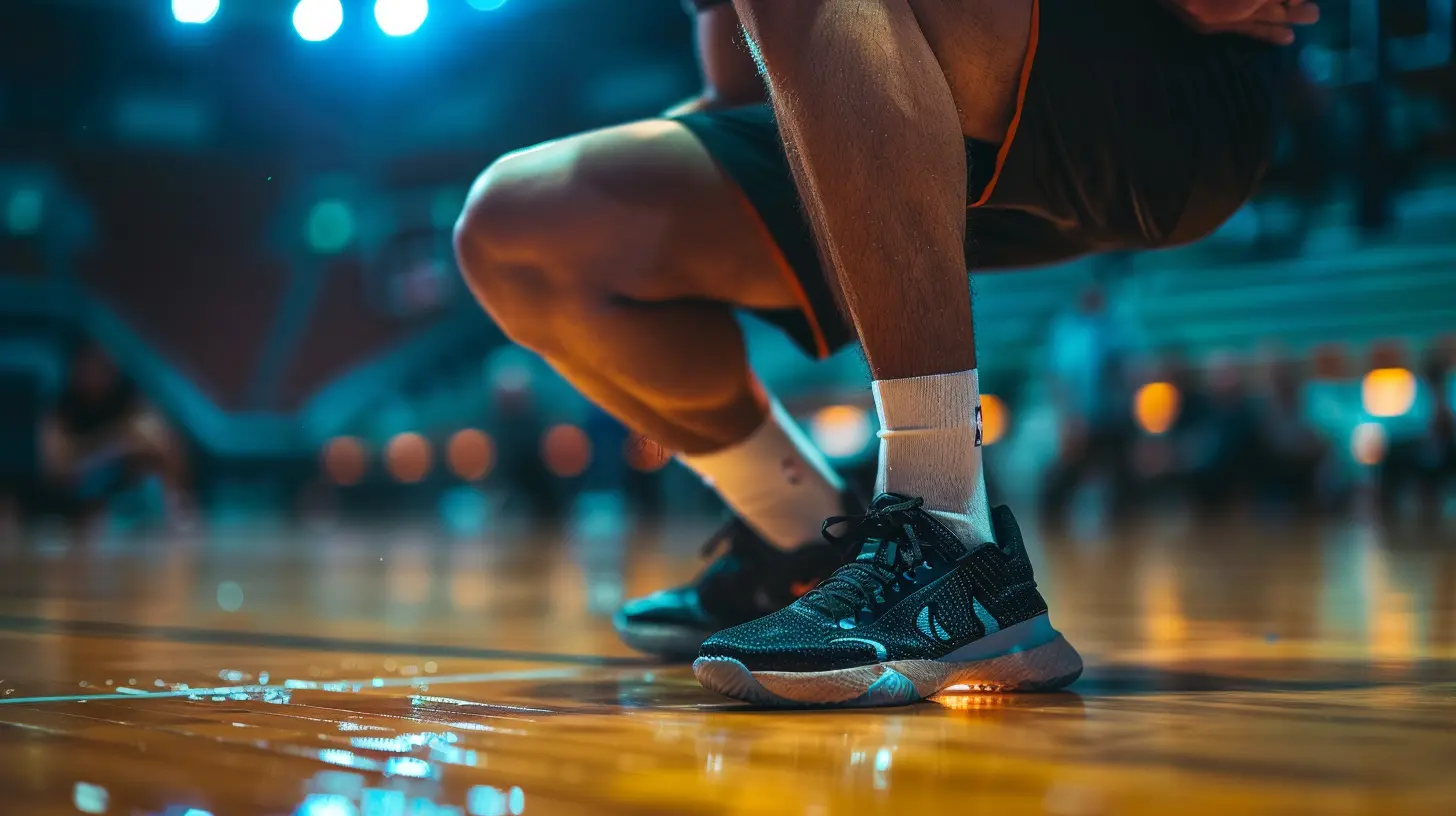Preventing Lower Extremity Injuries in Basketball Players
31 December 2024
Basketball is an exhilarating game, right? I mean, if you're anything like me, you've probably spent hours either playing the game or watching highlight reels of slam dunks, killer crossovers, and buzzer-beating shots. But, as electrifying as basketball can be, it's also a sport that puts a lot of stress on the body—especially the lower extremities. That’s right, I’m talking about those legs, knees, ankles, and feet that do all the heavy lifting, sprinting, jumping, and pivoting.
Unfortunately, the high-intensity nature of basketball makes lower extremity injuries quite common. And let’s face it: nobody wants to be sidelined by an injury, right? So, how can we prevent these injuries from happening in the first place? That’s what this article is all about! Let’s dive into ways you can safeguard your lower body and keep yourself on the court, not in the doctor's office.

Why Are Lower Extremity Injuries So Common in Basketball?
Before we go into prevention, let’s first understand why these injuries are so frequent in the sport. It’s simple: basketball is a high-impact, fast-paced game that requires quick changes in direction, sudden acceleration, and frequent jumping. The intensity levels are through the roof, and all that stress is concentrated on the lower body.Think about it: you’re constantly moving on the court—cutting, sprinting, and jumping—and all of that puts tremendous pressure on your legs, knees, ankles, and feet. Over time, this can lead to overuse injuries or acute injuries like sprains, strains, and fractures.
Common Lower Extremity Injuries in Basketball
Here are some of the most common lower extremity injuries that basketball players face:- Ankle Sprains: Easily the most common basketball injury. Rolling your ankle during a quick change in direction or landing awkwardly after a jump? Ouch!
- Knee Injuries (ACL, MCL): Knee injuries are a nightmare for any athlete. The twisting and turning in basketball can put stress on ligaments like the ACL (Anterior Cruciate Ligament) and MCL (Medial Collateral Ligament).
- Achilles Tendonitis: This occurs when the Achilles tendon becomes inflamed or overworked, usually due to repetitive jumping or running.
- Plantar Fasciitis: A condition that results from inflammation of the thick band of tissue that runs across the bottom of the foot and connects the heel bone to the toes.
- Shin Splints: A common overuse injury that causes pain along the shin bone (tibia).
Now that we know what we’re up against, let’s talk about how to prevent these injuries from derailing your game.

1. Warm-up and Stretching: The First Line of Defense
I know, I know. You’ve probably heard this a million times, but warming up before hitting the court is crucial. Think of your muscles as a rubber band. If you try to stretch a cold rubber band quickly, it might snap, right? But if you warm it up by pulling it gently, it becomes more flexible. The same principle applies to your body.Dynamic Warm-ups
Rather than static stretching (where you hold a stretch for 20-30 seconds), opt for dynamic stretching. This involves controlled movements that increase your range of motion, elevate your heart rate, and prepare your muscles for intense activity.Here are some great dynamic stretches to incorporate:
- High Knees
- Butt Kicks
- Lunges with a Twist
- Leg Swings
- Skipping
These exercises not only get your blood flowing but also prep your muscles and joints for the demands of the game.
Post-Game Stretching
After the game or practice, take a few minutes to stretch out your muscles. Focus on key areas like your calves, hamstrings, quadriceps, and hip flexors. Post-game stretching helps cool down your body, reduces muscle stiffness, and aids recovery.
2. Strengthening the Muscles: Build a Solid Foundation
You wouldn’t build a house on a weak foundation, right? So why would you expect your body to perform well if your muscles aren't strong enough? Strengthening the muscles around your knees, ankles, and hips can provide extra support, reducing the risk of injury.Focus on Key Muscle Groups
Here are some key muscle groups that need strengthening to prevent lower extremity injuries:- Quadriceps and Hamstrings: These muscles support your knees and help with quick changes in speed and direction.
- Calves and Achilles Tendon: Strong calves reduce the load on your Achilles tendon and can help prevent calf strains and Achilles tendonitis.
- Hip Muscles (Glutes): Strong hips lead to better balance and stability. Exercises that strengthen your glutes can prevent knee and ankle injuries.
- Core: You’d be surprised how much your core impacts your lower body. A strong core helps with balance and overall body control.
Must-Do Strengthening Exercises
Incorporate these exercises into your routine:- Squats: Targets the quads, hamstrings, and glutes.
- Lunges: Great for strengthening the quads, glutes, and improving hip flexibility.
- Calf Raises: Strengthens your calves and Achilles tendon.
- Planks: Engages your core, improving overall body stability.
- Single-Leg Deadlifts: A fantastic exercise for balance, hamstring strength, and overall lower body stability.
By building a strong muscular foundation, you’re essentially adding armor to your legs, making it less likely for an injury to occur.

3. Proper Footwear: Don't Skimp on the Kicks
Let’s be honest: we all love a flashy pair of sneakers. But when it comes to preventing injuries, fashion should take a backseat to function. Your basketball shoes are your first line of defense against lower extremity injuries, so choosing the right pair is essential.What to Look for in Basketball Shoes
- Ankle Support: Many basketball shoes come with high tops that provide extra ankle support, which is crucial for preventing ankle sprains.- Cushioning: Good shock absorption can help reduce the impact on your knees, ankles, and feet when you land after a jump.
- Traction: A solid grip helps you make quick cuts and changes in direction without slipping, which can prevent ankle injuries.
Replace Worn-Out Shoes
Here’s a piece of advice: don’t wait until your shoes are falling apart to replace them. Over time, the cushioning and support in your shoes degrade, increasing your risk of injury. If you’re playing regularly, consider replacing your shoes every 6-8 months.4. Balance and Agility Training: Stay Nimble
Basketball is all about agility—being able to move quickly and efficiently in different directions. However, poor balance can lead to awkward landings or awkward movements that increase the risk of injury.Incorporating Balance Drills
- Single-Leg Balancing: Stand on one foot and try to maintain your balance for 30 seconds. To make it harder, try closing your eyes or standing on an unstable surface.- Agility Ladder Drills: Quick feet, quick reactions. These drills help improve your footwork, coordination, and balance.
By improving your balance and agility, you’ll be more in control of your movements, which can significantly reduce the chance of injury.
5. Rest and Recovery: Listen to Your Body
You've probably heard the saying, "No pain, no gain," but that's not always true when it comes to injury prevention. Overtraining is a major cause of injuries in basketball players. When your muscles and ligaments are overworked, they become more susceptible to injury.The Importance of Rest
Listen, rest days are just as important as training days. Your body needs time to recover and repair itself. Make sure to schedule proper rest days throughout the week, especially if you're playing or practicing frequently.Recovery Techniques
- Foam Rolling: This is like giving your muscles a deep tissue massage—without the hefty price tag.- Cold Therapy (Ice): Applying ice to sore muscles or joints can reduce inflammation and speed up recovery.
- Proper Sleep: Don’t underestimate the power of a good night’s sleep. Your body does most of its repair work when you’re asleep!
6. Pay Attention to Early Warning Signs
Finally, always pay attention to your body. If you feel pain or discomfort, don't ignore it. That’s your body’s way of telling you something’s not right. Whether it’s a mild ankle sprain or some knee soreness, address it immediately rather than pushing through the pain. Trust me, it’s better to take a day off than to be out for an entire season.When to Seek Medical Advice
If you’re experiencing persistent pain or swelling that doesn’t improve with rest, it’s time to consult a professional. Early intervention can prevent a minor issue from turning into a major problem.
Conclusion: Protect Your Lower Body, Elevate Your Game
Preventing lower extremity injuries in basketball isn’t rocket science, but it does require a proactive approach. By warming up properly, strengthening key muscles, wearing the right shoes, improving your balance, and incorporating adequate rest, you can significantly reduce your risk of getting injured.Remember, basketball is a marathon, not a sprint. Taking care of your body now will ensure you can keep playing for years to come. So next time you lace up your sneakers, make sure you’re doing everything you can to stay healthy and injury-free. After all, the best ability is availability, right?
all images in this post were generated using AI tools
Category:
Sports MedicineAuthor:

Preston Wilkins
Discussion
rate this article
19 comments
Sylvia McKittrick
Great insights on injury prevention! By prioritizing training and recovery, players not only enhance their performance but also ensure longevity in the game. Let's keep pushing forward—every step taken is a step towards greatness!
March 24, 2025 at 9:51 PM

Preston Wilkins
Thank you! I appreciate your feedback and support. Prioritizing training and recovery is indeed crucial for players’ longevity and performance. Let’s keep advancing our understanding of injury prevention!
Owyn McGinnis
This article provides valuable insights on preventing lower extremity injuries in basketball players. Emphasizing proper conditioning, flexibility training, and injury awareness can significantly reduce risks. Implementing these strategies will enhance player longevity and performance on the court. Great read!
March 16, 2025 at 7:35 PM

Preston Wilkins
Thank you for your feedback! I'm glad you found the insights valuable for enhancing player safety and performance.
Avianna McMurtry
Great insights on injury prevention! It's so crucial for basketball players to prioritize lower extremity health. Simple adjustments in training and proper warm-ups can make a huge difference. Thanks for sharing these tips—let's keep our players on the court and injury-free! 🏀
February 6, 2025 at 9:07 PM

Preston Wilkins
Thank you for your thoughtful comment! I'm glad you found the insights helpful—prioritizing lower extremity health is essential for keeping our players injury-free. Let’s keep spreading awareness! 🏀
Abram Hayes
Great insights! As a basketball enthusiast, I appreciate the focus on injury prevention—it's crucial for maintaining players' longevity and performance on the court.
January 29, 2025 at 12:36 PM

Preston Wilkins
Thank you! I'm glad you found the insights valuable—injury prevention is indeed essential for player longevity and performance.
Tatianna Young
Every step on the court is a chance to elevate your game! By prioritizing injury prevention and strength training, basketball players can enhance performance and longevity. Stay proactive, stay strong, and keep aiming for greatness—your journey is just beginning!
January 26, 2025 at 3:20 AM

Preston Wilkins
Thank you for the encouraging words! Prioritizing injury prevention and strength training is indeed crucial for enhancing performance and ensuring a long, successful career in basketball.
Ashira Hamilton
Injury prevention in basketball is crucial for longevity and performance. Emphasizing proper technique, strength training, and flexibility can empower players to stay healthy, ensuring they remain competitive throughout the season.
January 20, 2025 at 12:39 PM

Preston Wilkins
Absolutely! Prioritizing injury prevention through proper technique, strength training, and flexibility is essential for helping basketball players maintain their health and performance over the long term.
Zevonis McGillivray
Interesting insights! I'm curious about the latest injury prevention techniques and their effectiveness. Thoughts?
January 16, 2025 at 7:51 PM

Preston Wilkins
Thank you! Recent techniques like neuromuscular training, strength conditioning, and proper warm-up routines have shown promising effectiveness in reducing lower extremity injuries in basketball players. Staying updated on these methods can greatly enhance injury prevention strategies.
Zephyris McClendon
Great tips! Keeping athletes healthy is so important!
January 13, 2025 at 9:57 PM

Preston Wilkins
Thank you! Keeping athletes healthy is crucial for their performance and longevity in the sport.
Christopher Young
Incorporating strength training, proper warm-ups, and consistent flexibility routines can significantly reduce lower extremity injuries in basketball players.
January 8, 2025 at 5:48 AM

Preston Wilkins
Thank you for your insightful comment! I completely agree that strength training, warm-ups, and flexibility routines are essential components in preventing lower extremity injuries in basketball players.
Susan McInnes
Great insights on injury prevention! Prioritizing lower extremity health is crucial for basketball players. Thanks for sharing such valuable information to keep athletes safe and effective!
January 7, 2025 at 12:34 PM

Preston Wilkins
Thank you for your kind words! I'm glad you found the insights helpful for promoting athlete safety and performance.
Deborah Vance
Preventing lower extremity injuries in basketball requires a holistic approach that combines proper training, strengthening exercises, and education on biomechanics. Emphasizing the importance of warm-ups, flexibility, and recovery routines can significantly reduce injury risks. Ultimately, fostering awareness among players and coaches is essential for promoting long-term health and performance.
January 6, 2025 at 9:25 PM

Preston Wilkins
Thank you for your insightful comment! I completely agree that a holistic approach, including training, education, and recovery, is crucial for preventing lower extremity injuries in basketball. Player and coach awareness is key to ensuring long-term health and performance.
Zadie Wells
Great article! Emphasizing proper warm-ups, strength training, and agility drills can significantly reduce the risk of lower extremity injuries. Educating players on injury prevention techniques is essential for their long-term success.
January 6, 2025 at 11:23 AM

Preston Wilkins
Thank you for your insightful comment! I completely agree—proper warm-ups and injury prevention education are crucial for athletes' longevity and performance.
Judith Moore
Just remember: if you can’t touch your toes, maybe stick to the bench for now!
January 4, 2025 at 1:38 PM

Preston Wilkins
Thanks for the reminder! Flexibility is key, and it's important to know your limits while building strength.
Ryan Lynch
Great tips! Keeping players healthy means more slam dunks and unforgettable moments on court!
January 3, 2025 at 7:54 PM

Preston Wilkins
Thank you! Absolutely, prioritizing player health not only enhances performance but also elevates the excitement of the game!
Sablethorn Cook
Great insights! Prioritizing injury prevention is essential for keeping athletes healthy and ensuring they can enjoy their game longer.
January 3, 2025 at 11:59 AM

Preston Wilkins
Thank you! I completely agree—focusing on injury prevention is key to sustaining athletes' performance and enjoyment in the sport.
Karen Morgan
Great tips, but let’s be real: if players spent more time on their fundamentals and less on flashy moves, they’d avoid injuries and keep their game fierce!
January 2, 2025 at 1:27 PM

Preston Wilkins
Thank you for your insight! Focusing on fundamentals is indeed crucial for injury prevention and maintaining a strong game.
Nix Frank
Great insights on preventing lower extremity injuries in basketball! The focus on proper training and conditioning is essential for player longevity. Thank you for sharing these valuable tips!
January 1, 2025 at 8:42 PM

Preston Wilkins
Thank you for your feedback! I'm glad you found the tips helpful for promoting player longevity.
Tristan Marks
This article provides valuable insights into preventing lower extremity injuries in basketball players. Emphasizing the importance of proper training, biomechanics, and recovery strategies is essential for maintaining player health. While the recommendations are solid, ongoing research and player feedback will enhance our understanding of effective prevention methods. Great read!
January 1, 2025 at 1:22 PM

Preston Wilkins
Thank you for your thoughtful feedback! I completely agree that ongoing research and player input are crucial for improving injury prevention strategies. I'm glad you found the article valuable!
Jemima Kirk
Great insights! Preventing injuries is crucial for athletes. Implementing these strategies can make a significant difference in players' performance and overall well-being. Thank you for sharing!
December 31, 2024 at 5:07 AM

Preston Wilkins
Thank you for your kind words! I'm glad you found the insights valuable for enhancing player safety and performance.
MORE POSTS
Underdogs Who Became Icons: The Stories Behind the Legends

Why Sportsmanship Is the True Measure of Success in Sports

The Most Exciting Sports Events to Travel For

What to Look for in High-Performance Hockey Sticks

Rivalry and Respect: The Magic of Sportsmanship in Competitive Sports

Underdogs Who Outworked the Competition: Tales of Grit and Determination

Sportsmanship Awards: Honoring the Values That Transcend the Game

The Role of Emotion in Cricket: Handling Triumphs and Defeats

The Role of Gratitude in High-Performance Sports

A Sports Lover’s Guide to Tokyo: From Baseball to Sumo Wrestling

The Growing Popularity of MMA in Asia

How Rule Changes Are Altering the Future of Major Leagues